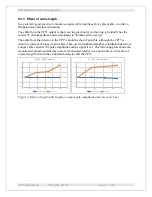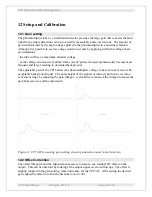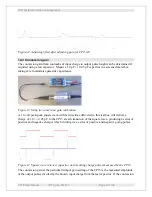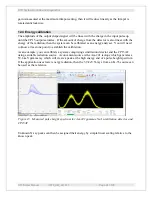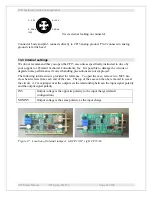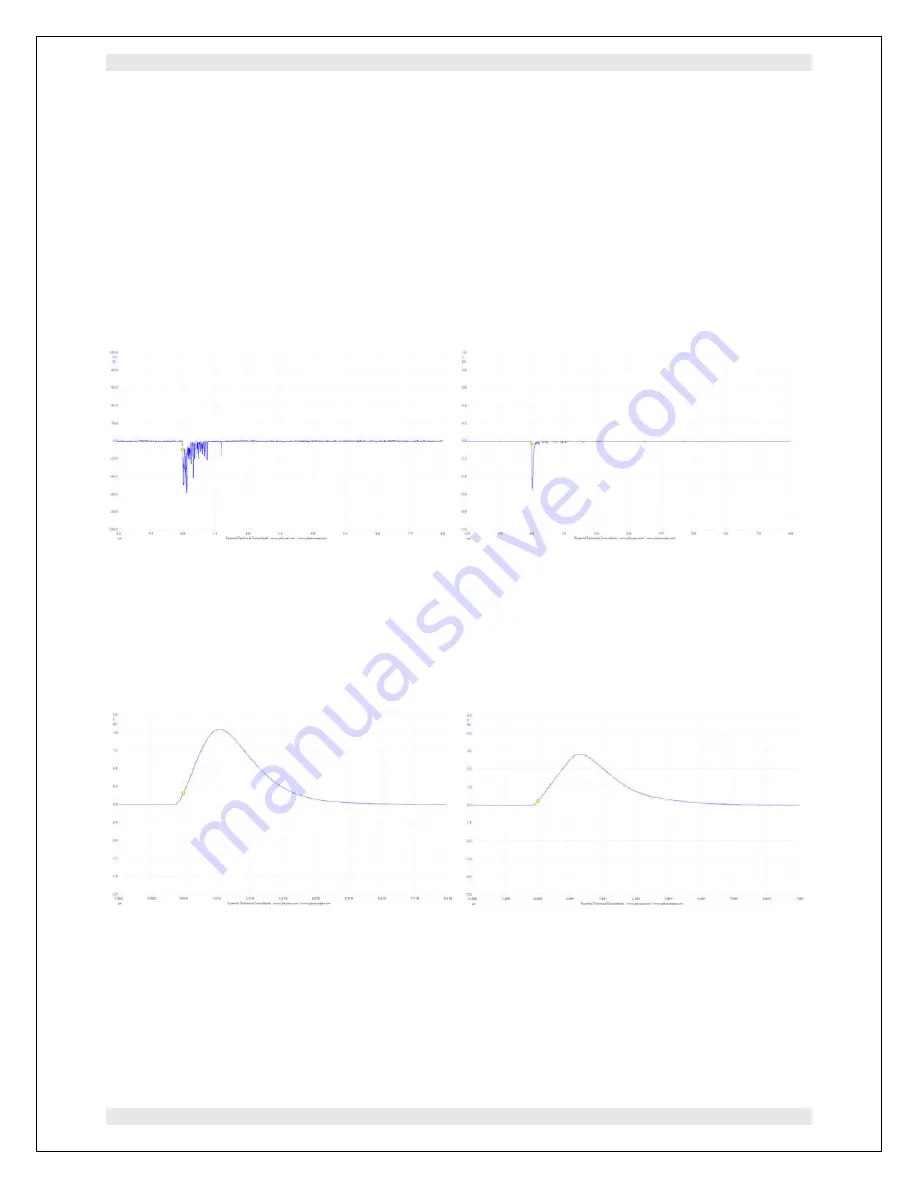
PTC System Controls and Diagnostics
CP15 User Manual CP15_UM_221017 Page 18 of 33
10
Comparison of CP15AF and CP15AL
An ideal scintillation detector would generate a single short pulse of charge for each ionizing
photon or particle that interacts in the scintillating material. In fact the interaction is more
complicated. If the detector signal is examined with a very high bandwidth measurement
system, it appears as a burst of charge pulses. This is particularly evident for sodium iodide
detectors but is also present for lanthanum halide detectors.
Figure 6 Output for a single 59.6 keV X-ray event from a NaI detector (left) and a LaCl
3
detector (right) measured with a high bandwidth CP10B preamp; 1 µsec per division.
The role of the CP15 preamplifier is to collect this burst of pulses into a single clean pulse that is
suitable for counting and pulse height analysis. The CP15AF has a time constant large enough to
collect all the output charge from a sodium iodide detector into a single output pulse. It will
perform the same task for a lanthanum halide detector, but the speed advantage of the lanthanum
halide will be lost.
Figure 7 Single output for a 59.6 keV X-ray event from a NaI detector (left) and a LaCl
3
(right)
measured with CP15AF preamp; 1 µsec per division.
The CP15AL is a faster circuit. It maintains the speed of the lanthanum halide detector while
providing gain and a small amount of filtering to smooth the pulse for pulse height
discrimination. If used with sodium iodide, too much of the underlying pulse structure is still
evident, so this is not a recommended combination.














